As the title says, in this post I wanted to tell only of this small “discovery” that I made here in Namche that is between romanticism and history. But, when I began to write, I immediately realised that for those who follow my blog and have never been in Namche, it could be interesting to put it in context and to explain the origin and evolution of this town, that in my opinion, it is a very unique fact not only here in Khumbu but also in all the mountain areas of Nepal. And for those who already know or are in a hurry (Oh, this hurry of Westerners!), may go directly to the last section where they will find the information of this little discovery.
Namche
Namche, called Nauje in the Sherpa language, is a town that was created less than 150 years ago in an area that, according to the oral tradition, was full of trees, especially juniper and fir trees. That is why at the beginning was known as Nagchhe, which means “the great forest”, and that later led to Nauje. The first settlers cut large quantities of trees so today the natural amphitheatre where is the village of Namche, now is a zone with no trees. However, in recent years they are reforesting the surrounding area with native trees under the initiative of neighbours and the Sagarmatha National Park.
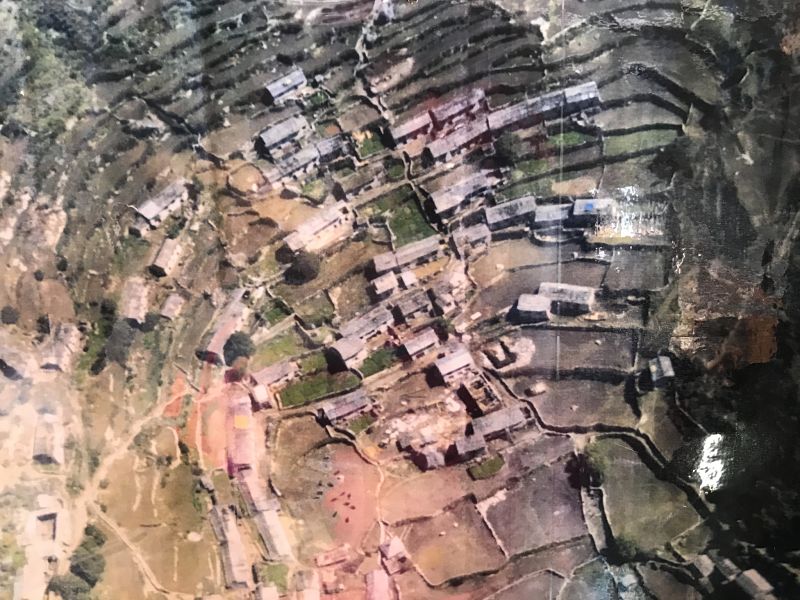
Namche image in the late 1950s 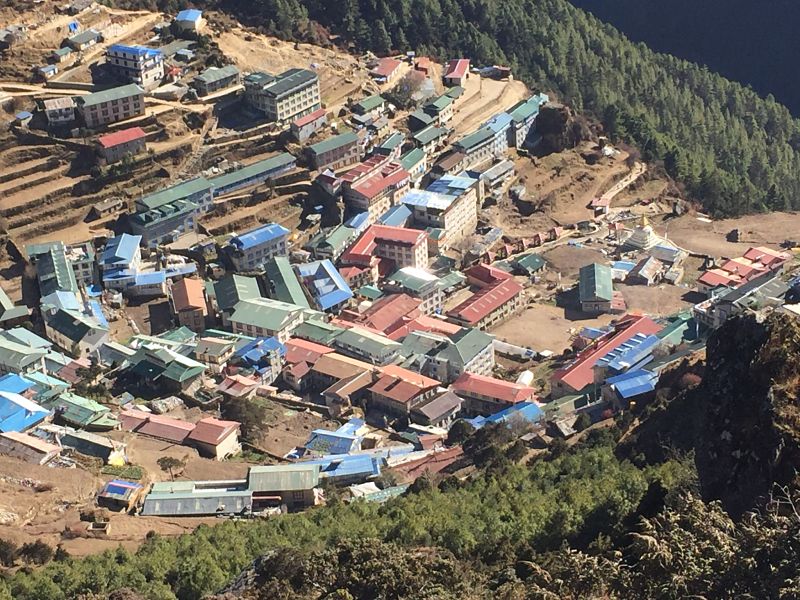
Namche in 2019
Trade and the weekly market
Namche has never been an agricultural town and from the beginning its inhabitants, many of whom arrived from the surrounding villages, were engaged in trade between Nepal and Tibet. The main goods Khumbu’s Sherpas traders exchanged were salt and wool from Tibet by rice and cereals from India and Nepal. This help them prosper rapidly thanks to the Nepali government in the mid-nineteenth century granted to the Sherpas of Khumbu the commercial monopoly with Tibet through the Nangpa La pass, which is the pass through where the first Tibetan Sherpa came in more of 500 years. Nowadays the Namche Sherpa community is considered one of the wealthiest in Nepal.
In the first years, Namche was primarily a place where merchants stored goods until the beginning of the 1900s, and due to this it became the main trade centre in the area. This was so until China in 1959 took over Tibet and the Chinese government closed the Nangpa La pass, which communicates Khumbu and Tibet, and that is how trade between the two countries stopped. After a few years China authorized the Tibetans to go to the Namche market but not to Sherpa to enter to Tibet. Finally, in 2012, they totally banned it because there were too many Tibetans who did not return, whether to stay in Namche or other places as refugees or to go to meet the Dalai Lama in India.
Until 1964 the weekly market of Namche did not exist since the weekly markets are usual in Nepal, but they are not a Sherpa custom. Until then the goods were stored in the houses and the merchants sold them on demand. It was a military officer of the first detachment that the Nepalese government established in Namche, who launched the market to meet the needs of soldiers who were broader and more diverse than those of the Sherpas. From the beginning it was a Saturday market until a couple of years ago it was extended to Friday all day and Saturday at noon.
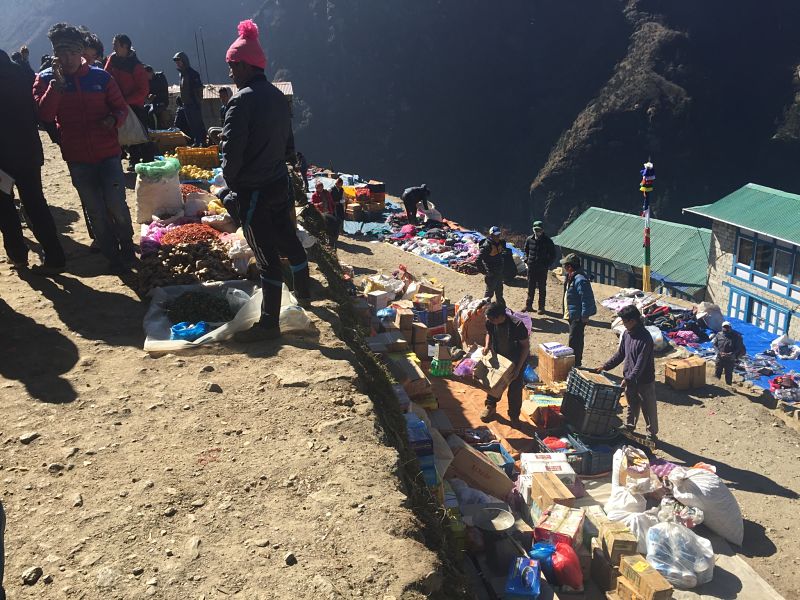
Wekly market in Namche 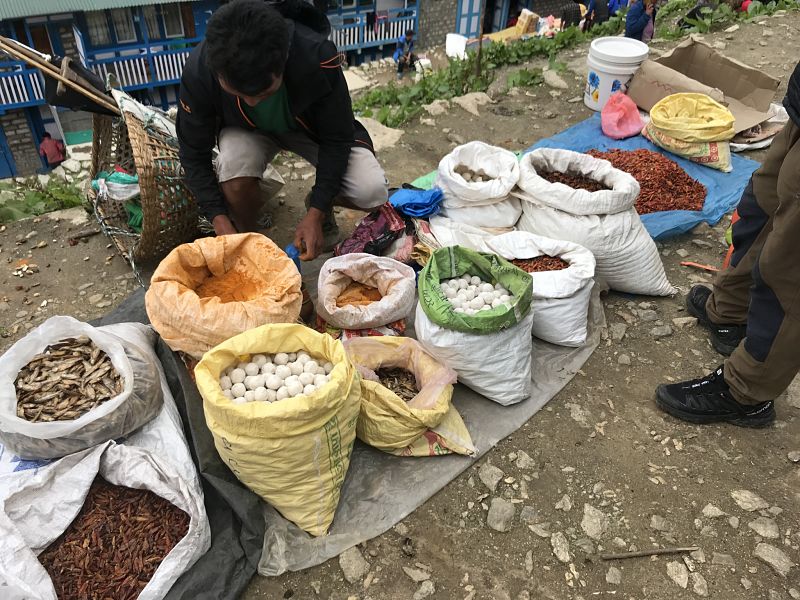
A seller post in Namche market
The growth of Namche
The early years Namche was a very small town. It is known that by the year 1855 there were 55 households and is not until 1990 we know data that speak of 115 households and 530 inhabitants. And since then, there is no reliable data on the growth of Namche since the census provide data for aggregations of villages. Thera are estimates, that speak of about 270 households and 900 inhabitants in 2001 and 320 households and just over 1,000 inhabitants in 2011.
On the other hand, there is data on the evolution of tourism and accommodation in Namche. In 1964 only came 20 tourists, but in the year 2000 they were 25,291 and 2018 reached 56,303. This already gives an idea of the magnitude of the impact of tourism in this town.
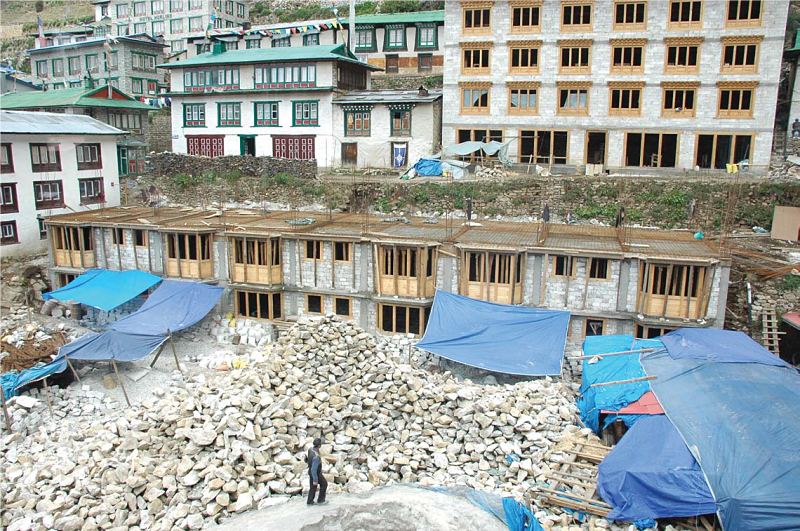
Hotel Namche and Yak Hotel under construction (2008) 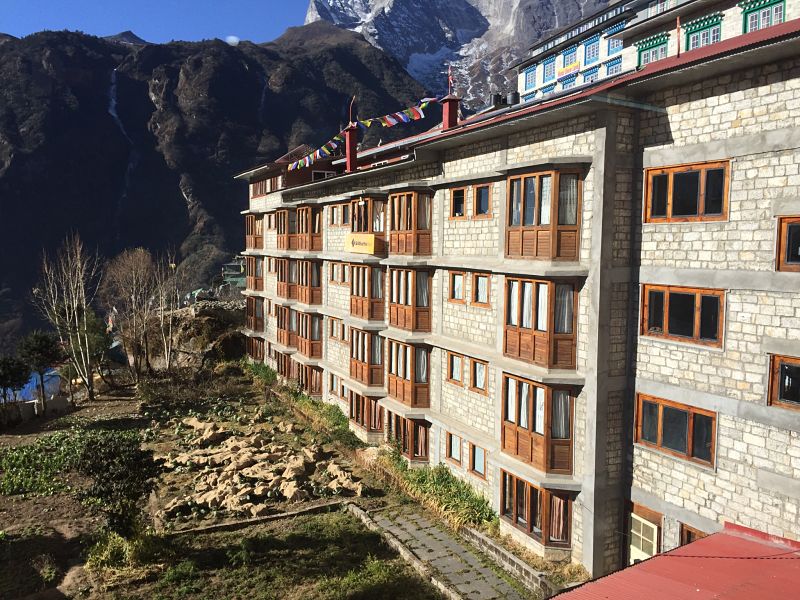
Hotel Namche in 2019 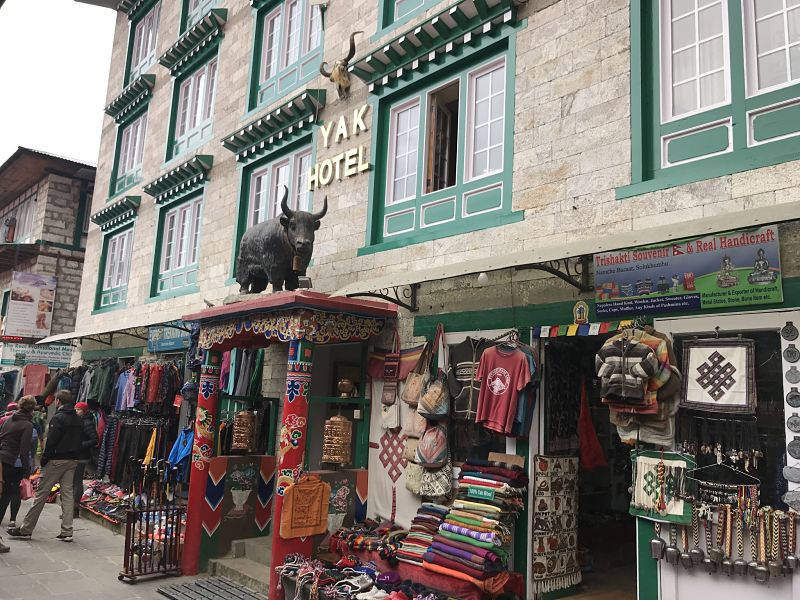
Yak Hotel in 2019
As for the lodging of the tourists, until the beginning of the 1970s they camped in tents or they lodged in private houses of their guides. It was not until 1971 that the first lodge was opened. 2 years later there were already 3 and in 1990, there were 30 with a capacity of 600 beds. In 2012 there were 51 lodgings between lodges and hotels and there are currently 60.
As a good village of traders they are, the first store opened in 1967, that is, 4 years before the first lodge. In 1990 there were already 15 tea shops and 25 shops. And it was in 2000 that the first bakeries, which offered pastas and cappuccinos, appeared. There are currently 14.
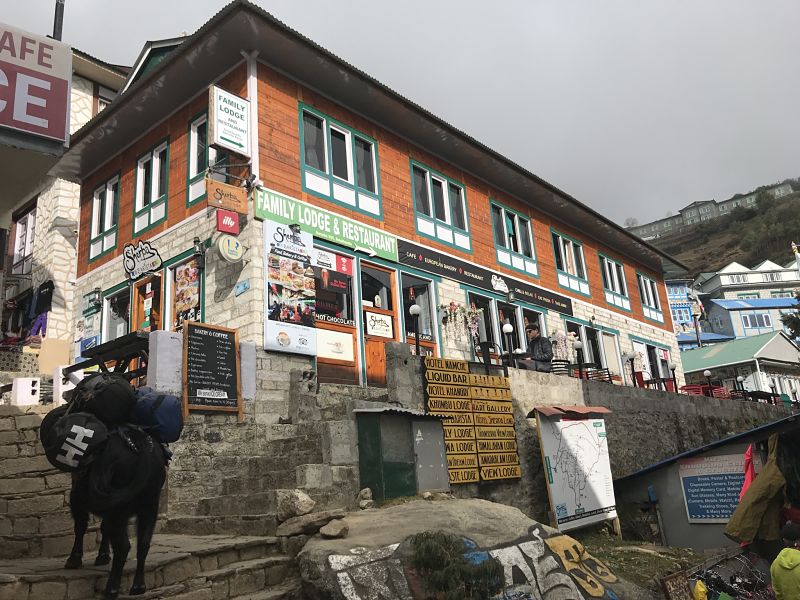
A bakery in Namche downtown 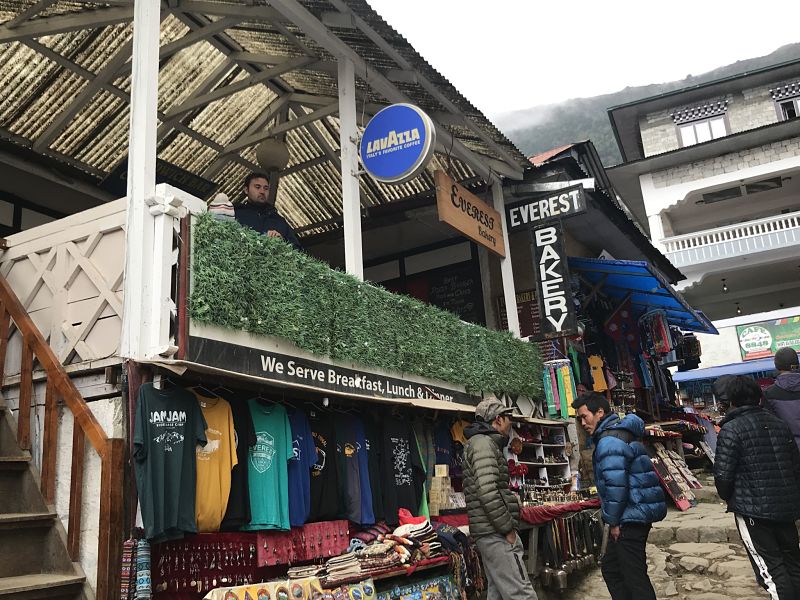
One of the oldest bareries in Namche
The large number of tourists and the infrastructure that has been created in the last 50 years has made Namche an atypical people among the Khumbu people. During the seasons of spring and autumn it looks more like a small western tourist city than a rural village in any valley that you must walk for two days to get there. It is the paradigm of the transforming capacity of tourism here in Khumbu.
The first lodge
The first lodge, which was named Sherpa Hotel, was opened in 1971 in an existing building, a traditional Sherpa building, which consisted of two floors. The lower part, with entrance from the rear field, was used for warehouses and cattle stables as was usual in Sherpa houses. The high floor was where tourists were accommodated and had an independent entrance from the trail that is now one of Namche’s main streets. The Sherpa Hotel name can still be read on the access door.
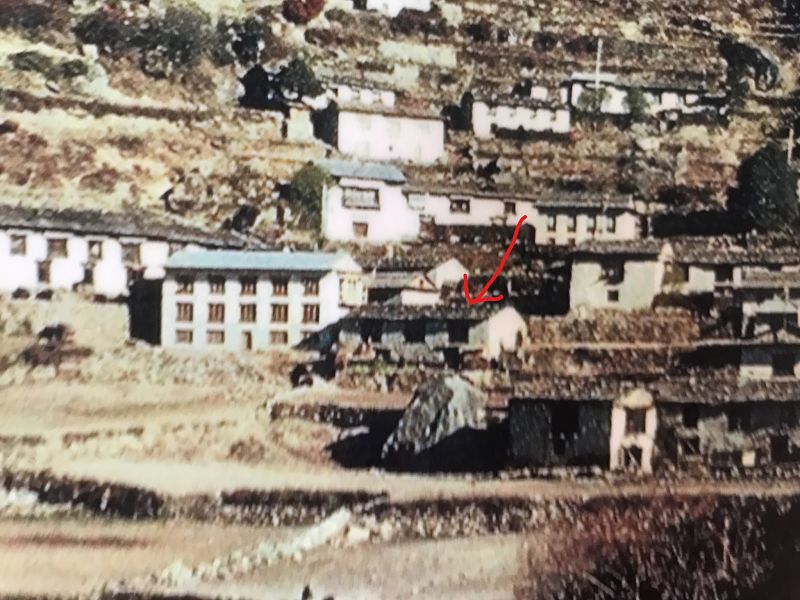
The Sherpa Hotel at the end of the 1970s (arrow) 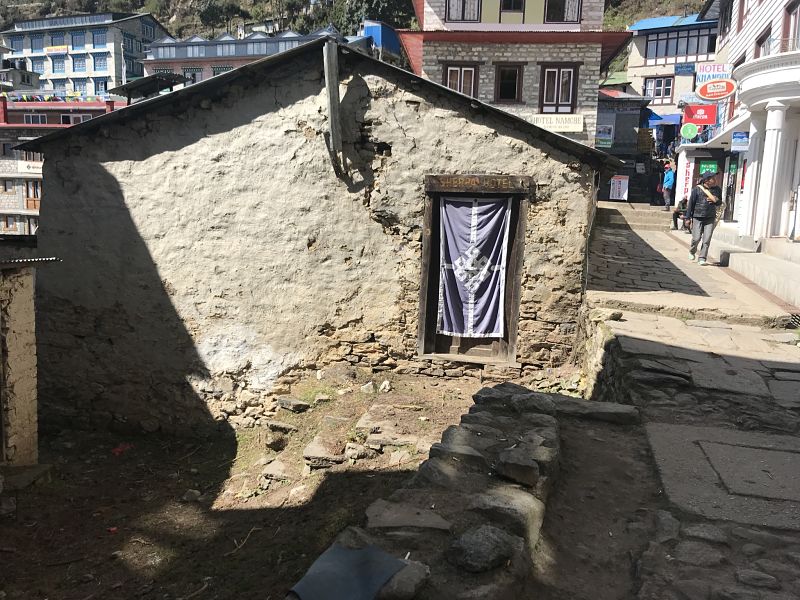
Recent picture of the former Sherpa Hotel 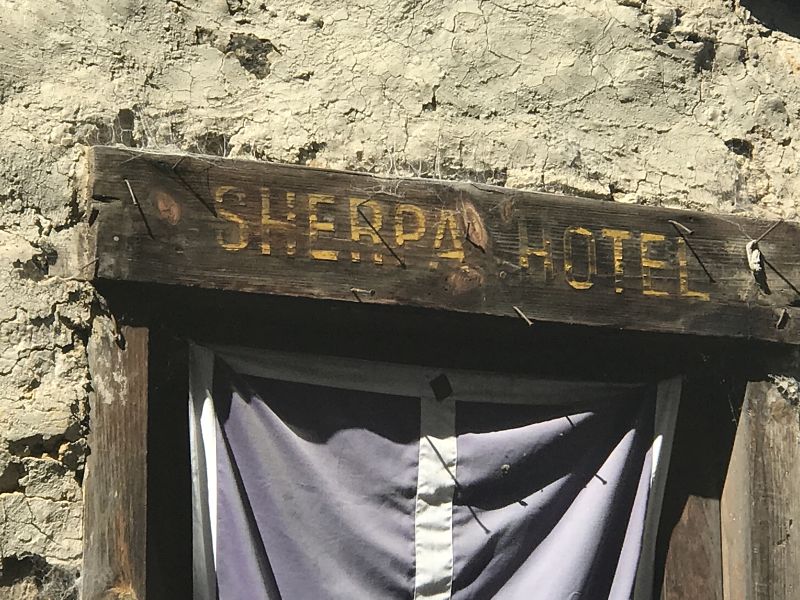
Hotel sign still visible today
It consisted of a lobby, a large kitchen, a dining room and a large shared bedroom for guests. The “menu” in those years was based on potatoes, rice and more potatoes.
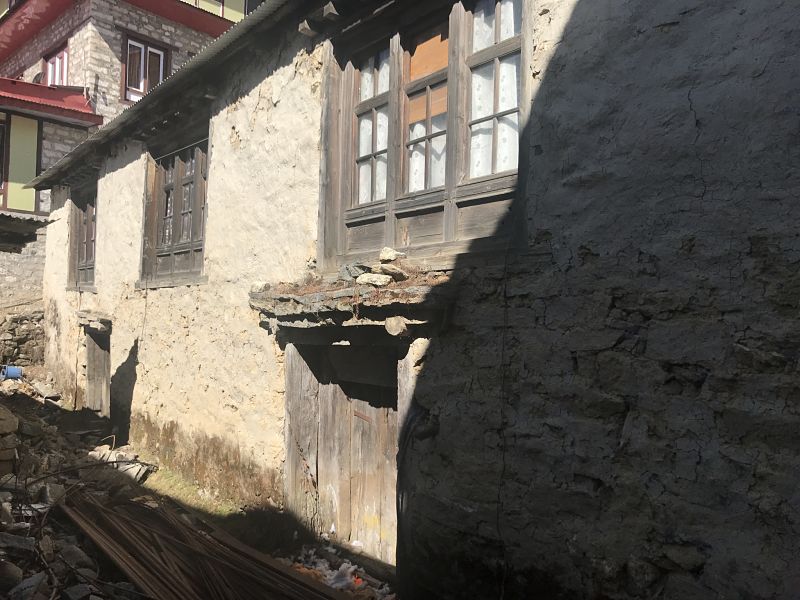
Back facade 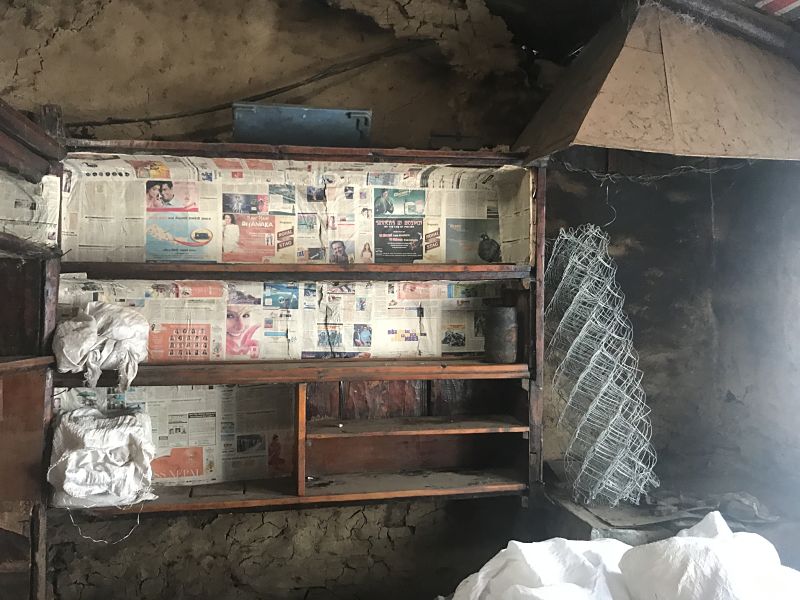
Room used as a community bedroom 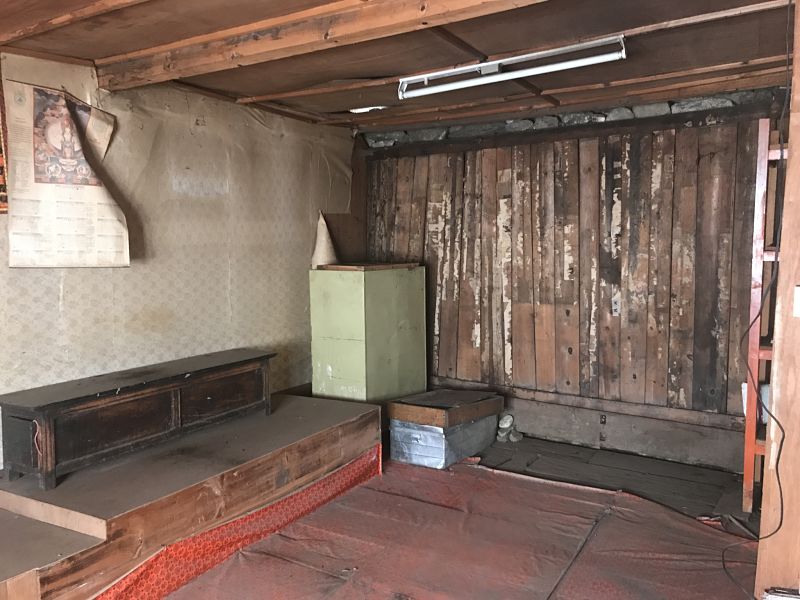
The kitchen remains
The building where the Sherpa Hotel was located still exists although in very bad condition, as can be seen in the pictures. Today it serves as a storage room, but its life is coming to an end because at the beginning of next year it is planned to demolish it to build a new building for commercial and offices use. That’s why I wanted to leave this modest testimony of what was the beginning of the accommodation services that, in less than 50 years, have radically transformed the town of Namche.